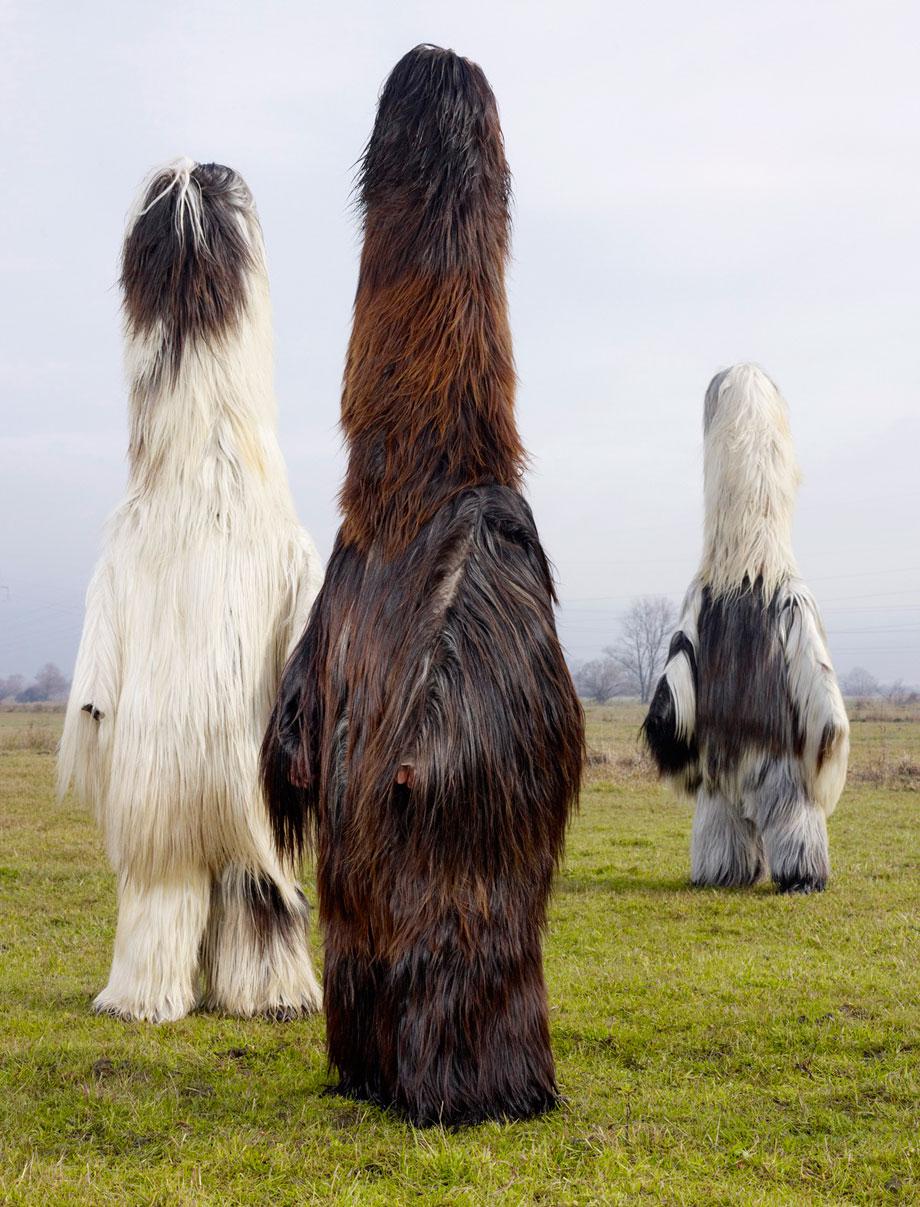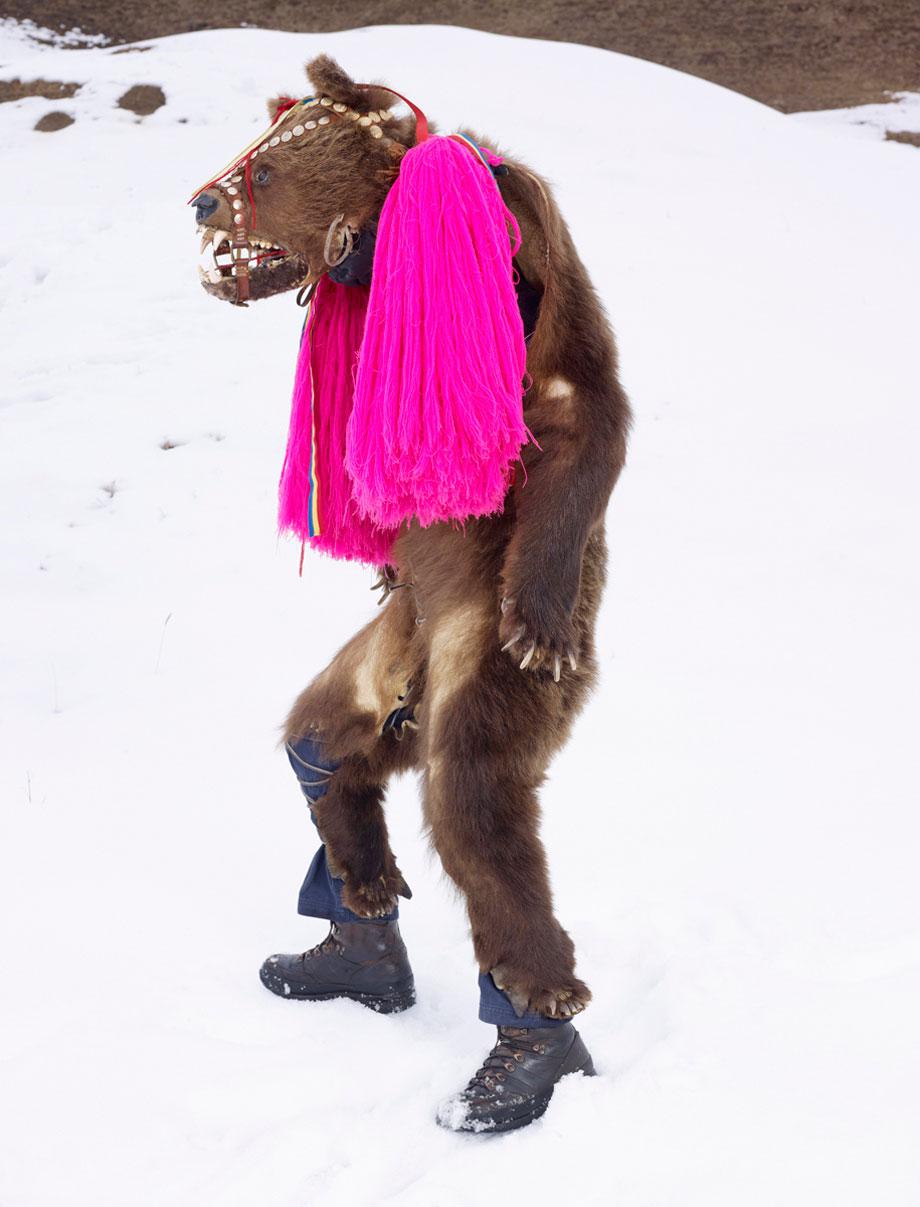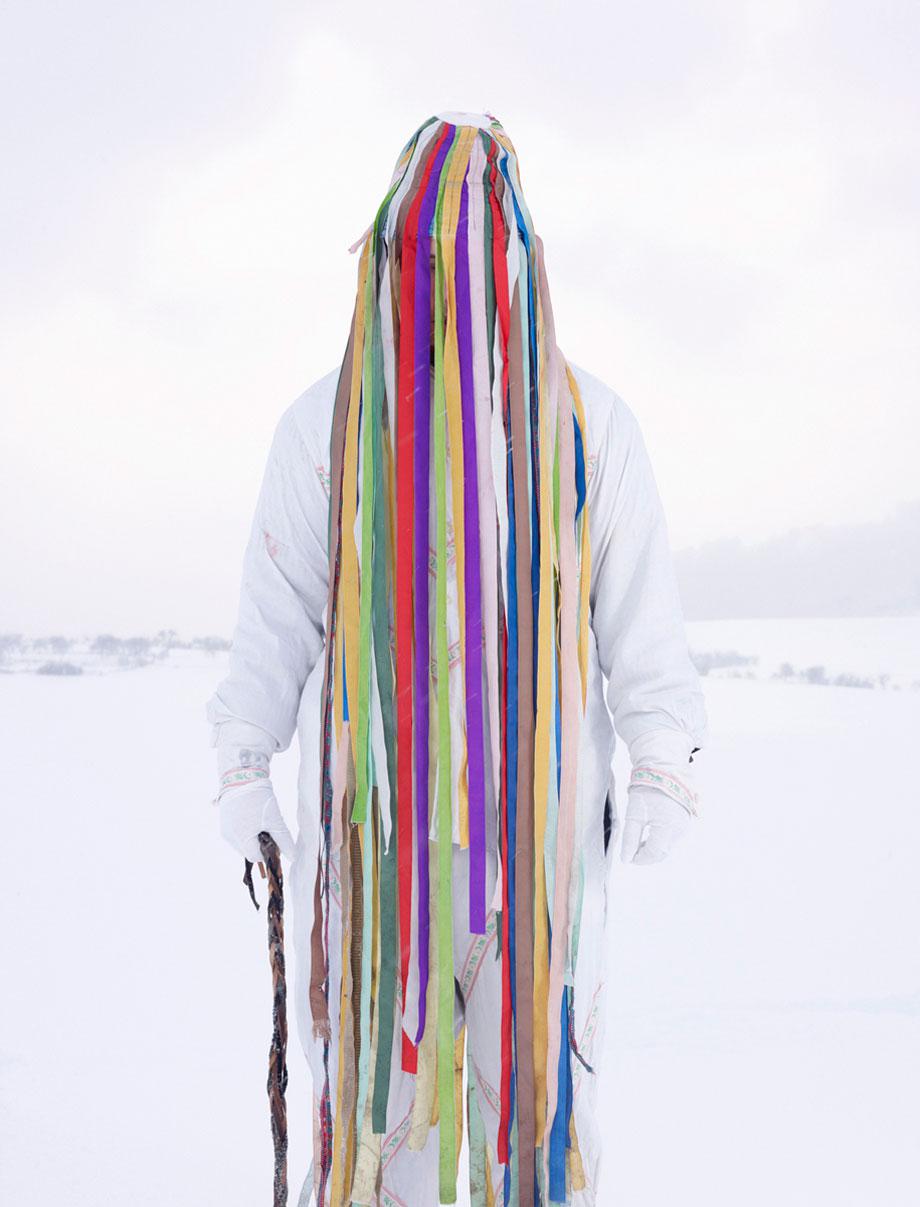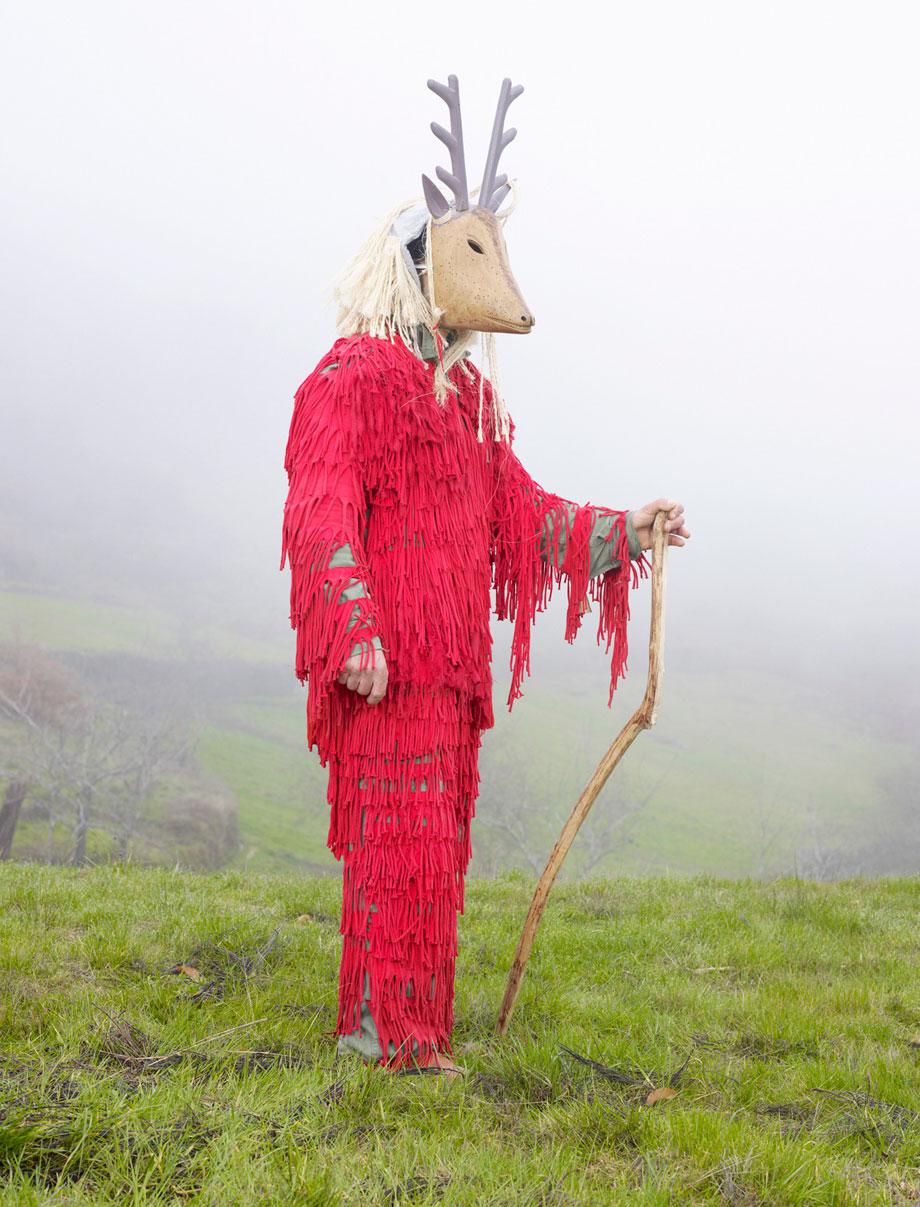If you thought Santa’s naughty list was intimidating, chances are you never encountered a Krampus.
A beastlike creature that is part of the pagan folklore of Alpine countries including Austria, Hungary, and Slovenia, the Krampus was to play “bad cop” so Santa could spend time focusing on the better behaved children.
The Krampus is also the first beast Charles Fréger encountered during his two-year journey through 19 European countries documenting pagan festivals. The resulting series, “Wilder Mann” is on view at Yossi Milo Gallery in New York through May 18 and is also available as a monograph titled Wilder Mann: The Image of the Savage published by Dewi Lewis Publishing.
Fréger initially came into contact with the costumed “Wild Man” while watching a friend’s show in Lyon, France. Following his visit with the Krampus in Salzburg, Austria, Fréger knew he had found his next project.
“I found myself in front of something very radical, no face … it was more of a character with a mask and a focus where the body is more important than the face itself,” he said.

Charles Fréger, Courtesy of Yossi Milo Gallery, New York

Charles Fréger, courtesy of Yossi Milo Gallery, New York

Charles Fréger, courtesy of Yossi Milo Gallery, New York
Initially Fréger planned on covering 12 countries, but as he became immersed in the project he found himself traveling to more and more places.
“When I work on a project I do it quite intensely,” he began. “If I start, I have to go to the end of it. Of course there are more groups [than what he included in the project], but what I found is a representation of what you can find generally in Europe.”
The concept of a “Wild Man” is steeped in pagan celebrations connected to changing of seasons, rites of passage, and other life changing events. Fréger said many of the traditions are full of joy and, regardless of the country, had a lot in common.
“There was a slight touch of universality because a lot of the groups were doing something similar without knowing one another. Because many of the festivities were focused on animals and vegetation, you could photograph someone dressed like a bear for example in Portugal or Spain or Romania. To me this was really exciting and interesting.”

Charles Fréger, courtesy of Yossi Milo Gallery, New York
